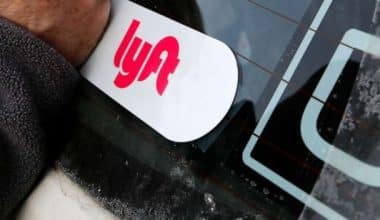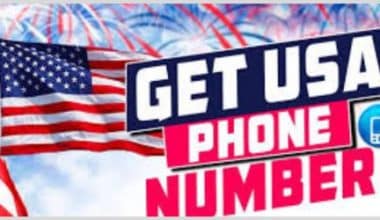What is a Naked Call?
A naked call is an options strategy in which an investor writes (sells) a call option without owning the underlying stock as cover. If the option is exercised before the expiration date, the investor must take the short side of the call option. This ensures that they receive shares of the underlying security.
N.B: For the records, when it comes to options, the term “writing” has a totally different meaning. It has nothing to do with literal writing. It actually means selling an option, naked call for example. In other words, when you come across the term, “writer in options,” it means the seller.
A naked call is one of the riskiest investments for investors who are interested in risky options trading. There are many ways to benefit from the movement of stocks. Since there are so many ways to incorporate the purchase and selling of call and put options, options offer a wide range of investment strategies.
Furthermore, call options contracts to allow their owners to purchase the underlying securities. They are basically able to purchase them at a predetermined strike price before the contracts expire.
The ensuing paragraphs should help you fully understand how they work.
Naked Calls: An Overview
A naked call allows an investor to earn premium income without selling the underlying security directly. Writing an uncovered call option is primarily motivated by the premium offered.
It is inherently risky since the upside benefit potential is small and the downside loss potential is theoretically limitless. In reality, the option writer’s maximum benefit is the upfront premium, which is normally credited to their account. The writer’s target is to ensure the option expires worthless.
However, since there are no limits to how high the price of the underlying security will increase, the potential loss is technically unlimited. However, based on their risk tolerance and stop-loss settings, the seller of the options would likely buy them back. This occurs far before the price of the underlying increases too far above the strike price.
As a result, a seller of call options requires the underlying protection to drop in value so that they can receive the full premium if the option expires worthless. However, if the underlying security’s price increases, they will have to sell the stock at a much lower price. Often lower than the market price. This is because the option holder may want to exercise their right to purchase the security. In other words, they may be assigned to sell the stock.
Particular Points to Consider
The writer’s breakeven point is determined by multiplying the option premium earned by the strike price of the sold call.
A rise in implied volatility is unfavorable to the writer because it increases the likelihood of the option being in the money (ITM) and thus being exercised. The passing of time, or time decay, would have a positive effect on this tactic. This is because the option writer needs the naked call to expire out of the money (OTM).
However, because of the risk, this advanced strategy can only be used by seasoned investors. I mean who are confident that the price of the underlying security will fall or stay flat. Furthermore, the risk of open-ended losses gives way to very high margin requirements for this strategy. And if margin thresholds are exceeded, the investor may be required to buy securities on the open market prior to expiration.
The strategy’s advantage is that the investor can earn money in the form of premiums without having to put up a lot of money upfront.
Making Use of Naked Calls
Again, writing Naked calls carries a substantial risk of failure. However, the risk-takers are often the first to jump on this. They write call options to receive the premium with the expectation that the price of the underlying security, which is normally stock, will fall or stay the same. The options writer retains the entire premium minus commissions if the stock remains below the strike price between the time the options are written and the expiration date.
If the stock price rises above the strike price by the expiration date of the options, the buyer of the options may demand that the seller deliver shares of the underlying stock. The options seller would then have to go out and purchase those shares on the open market at market price in order to sell them to the options’ buyer at the strike price.
If the strike price is $60 and the stock’s open market price is $65 at the time the options contract comes into play, the options seller will lose $5 per share of stock. That’s minus the premium paid.
Naked Call Example
Consider the following example of a naked call. If a stock is trading at $20 and the investor believes it will not rise above $35, he can sell a naked $35 call option. Let’s assume the premium the investor receives for the option is $100 in this case.
The naked call technique is used by an investor who wants to make the most money. He expects the underlying price of the stock will not surpass the value of the options contract, and therefore the options will not be exercised. The owner keeps the entire premium if the option isn’t exercised, which in this case will be $100.
Because of the potential for failure, naked calls are highly dangerous. Let’s pretend that the underlying stock of the option rises to $50 and the option holder exercises the option. It implies that the investor must purchase 100 shares of the stock at $50 each, shares that he has effectively sold for $35 each.
As a result, the investor loses $15 per share. $15 multiplied by 100 shares equals $1,500. The investor’s net loss is $1,400, minus the $100 premium he got for selling the option.
Every investor’s ultimate aim is to profit from their investments. Naked calls are not a conservative trading technique by definition, and can only be used by seasoned traders.
Demands for margins
The margin requirements for naked calls are incredibly high in order to retain the position, given the potentially infinite risk that you and your broker/dealer are exposed to. Broker/dealers have the ability to impose margin conditions that are stricter than the rules. These requirements will, however, differ from broker/dealer to broker/dealer. Relevant specifications should be a vital topic of discussion with your broker/dealer.
Reg T specifies the following requirements from a regulatory standpoint:
- A naked in-the-money call: This is one in which the options market value is equal to 100% plus 20% of the underlying equity price.
- Out-of-the-money naked call: 100 percent of the options market value plus 10% of the underlying equity price. Or 100 percent of the options market value plus 20% of the underlying equity price minus 100 percent of the out-of-the-money sum, whichever is greater.
A Better Approach
In terms of risk exposure and margin requirement estimates, naked calls often prove to be more hassle than they’re worth. A better option is to set up a large bear call spread. You could arrange the spread so that the premium you earn (net credit) is equivalent, while also minimizing risk and margin requirements by purchasing a long out-of-the-money call at a higher strike price.
What happens if the underlying stock price rises above the strike price?
If the price of the underlying security rises above the strike price, the investor will be obligated to sell the security at the strike price, potentially incurring significant losses.
What is the breakeven point for a naked call?
The breakeven point for a naked call is equal to the strike price plus the premium received for selling the call option.
What is the difference between a naked call and a short stock position?
In a naked call, the investor writes a call option without owning the underlying security, whereas in a short stock position, the investor sells stock they have borrowed in the hope that the price will decrease, allowing them to buy back the stock at a lower price and profit from the difference.
Can you make money from naked calls?
Yes, an investor can make money from naked calls if they receive a premium for selling the call option and the price of the underlying security does not rise above the strike price.
How do you manage risk when writing naked calls?
Risk management when writing naked calls is important and can include monitoring the price of the underlying security, setting stop-loss orders, and limiting the size of each naked call position.
What are the potential consequences of a naked call assignment?
If a naked call option is assigned, the investor is obligated to sell the underlying security at the strike price, potentially incurring significant losses if the price has risen above the strike price.
How do you close a naked call position?
A naked call position can be closed by buying back the call option, or by allowing the option to expire worthless if the price of the underlying security does not rise above the strike price.
Conclusion
The naked call option is an extremely risky investment, It is advisable to fully understand how it works before venturing into it. This is primarily because of the limitless risk involved in it.
Naked Call FAQs
What happens if a naked option exercised?
Naked Puts
A naked put option seller has accepted the obligation to buy the underlying asset at the strike price if the option is exercised at or before its expiration date. … Essentially, a seller who sold a put option is liable to have a long stock position if the option buyer exercises.
Are naked options good?
Trading naked options can be attractive when considering the number of potential winning trades versus losing trades. However, do not be taken in by the lure of easy money, because there is no such thing. There is a tremendous amount of risk exposure when trading in this manner, and the risk often outweighs the reward.
How much can you lose on a naked put?
The “premium” is the purchase price of the option. The maximum potential loss for the seller of a naked put option is the strike price of the option times 100 shares, minus the premium received for selling the put
How do you exercise a naked put?
A naked put is when an investor sells a put option without having sufficient funds in the account to cover the purchase if the option is exercised. To set up a naked put, an investor simply sells a put option. The short side of the put option is required to purchase the underlying stock at the exercise price
- Short Call vs Long Call Explained! Comparing risks and rewards
- COVERED CALL OPTION: How To Use Covered Call Option Strategy Effectively (+ Detailed Guide)
- SHORT PUT OPTION: Overview, Examples (+trading tips)
- WRITING A COVERED CALL: How To Write An Effective Covered Call With Example( Update)
- COVERED CALL Explained: Understanding Covered call Formula With Examples






